Secret Command

Brief Synopsis
Cast & Crew
Eddie Sutherland
Pat O'brien
Carole Landis
Chester Morris
Ruth Warrick
Barton Maclane
Film Details
Technical Specs

Synopsis
When a ne'er-do-well, ex-war correspondent Sam Gallagher, asks his brother Jeff for a job at the Calship shipyards where Jeff is a foreman, Jeff, bitter about Sam's extended absence during their mother's illness and death, reluctantly hires him as a pile driver. Unknown to Jeff, Sam is an undercover agent for Naval Intelligence and has been assigned by James Thane to investigate reports of sabotage at the shipyards. Thane tells Sam that, as a cover, a family consisting of a wife and two children has been fabricated for him, and a house has been rented in his name. Before dawn the next morning, Sam reports to work and meets his new partner, Red Kelly, a skilled veteran who detests all newcomers. After Sam is assigned the cold, wet job of driving piles into the sea floor, he meets fellow workers Brownell and Simms; Max Lessing, the plant's general manager; and Ben Royall, the safety inspector. While filing some papers at the office, Sam sees Lea Damaron, his former sweetheart, who is now dating Jeff and working as a secretary at the plant. When Sam tells Lea that he is married and has two children, Lea passes the news along to Jeff. Jeff, suspicious of his brother's behavior, determines to investigate his past. After work, Sam goes to his new house and there meets Jill McCann, the agent assigned to pose as his wife, and Joan and Paul, refugees orphaned by the war who are to act as his children. Soon after, Miller, another worker at the plant, visits and introduces himself as Sam's contact. Miller informs Sam that he has met two Nazis posing as defense workers and learned that they are planning to sabotage the entire shipyard. The next day at work, Kelly's antagonism toward Sam results in a fistfight. When Sam feigns cowardice, Jeff's suspicions are aroused and he asks Lea to get Sam to confide in her. While driving Sam home after work, Lea questions him about his wedding, and he tells her that he was married in London. When Sam invites Lea inside to meet his wife Jill, Jill mentions that they were wed in Paris, thus confirming Jeff's suspicions. At the plant that night, a saboteur stealthily removes a bolt from a set of steel beams. During a meeting the next day, Lessing announces that a dock must be extended to meet a carrier due to arrive in three days. To speed progress, the pre-constructed set of metal beams is lifted by a crane to attach to the dock, but with the bolt missing, a nut loosens and falls off. Jeff climbs onto the crane to repair the beam, and when the crane swings loose and hits him, Jeff is tossed, unconscious, into the water. Sam dives in to rescue him, thus winning the men's respect. Later, Sam visits Jeff in the hospital, and Jeff interrogates him about his new family, but Sam insists that he is telling the truth. After Sam leaves, Lea confesses to Jeff that she thinks she is still in love with Sam. On his next shift, Sam examines the rig, trying to determine what caused the accident. After Lessing confronts him, Sam tells Miller that he thinks Lessing may one of the saboteurs. That evening, Miller notifies Sam that he has discovered that Royall and Lessing are the Nazi saboteurs and are planning to sabotage the plant the day after the carrier docks. Later, at the plant, Sam finally wins Kelly's respect and Kelly buys toys for the children and offers to chauffeur Sam to work. Miller then tells Sam that Simms is also involved in the plot, and to his horror, Sam realizes that Simms once saw him in a German prison camp in Berlin. After being told that one of his children is sick, Sam hurries home and learns that Miller has phoned Jill with the news that Simms has recognized him. Soon after, Simms appears at the house and, at gunpoint, forces Jill and Sam to accompany him. Sam overpowers Simms, however, and Jill strikes him over the head with a fireplace poker, killing him. Simms's death propels the saboteurs to take immediate action. Convening a meeting that night, Brownell introduces himself as Gestapo agent Colonel Von Browning and announces that he has been appointed their new leader. Brownell proclaims that the group must stay together until daylight, the time of the planned explosion. Desperate, Miller sneaks into a backroom to phone Sam, but is discovered by Brownell and killed. Hearing Sam's voice on the telephone, Brownell leads his men to Sam's house to eliminate him. Mistaking Kelly, who has come to pick up Sam, for their prey, the spies shoot and kill him. Jill cradles Kelly in her arms, and with his dying breath, he identifies Brownell as one of his assailants. Alerted by Miller, Sam has gone to the plant to meet Thane and apprehend the saboteurs before they can act. After Thane arrests Royall and Lessing, Jill runs into the yards and warns Sam that Brownell, who is still free, is their leader. Sam finds Brownell just after he has set the detonator for the explosives. As the minutes tick away, Sam struggles desperately with Brownell. Finally drowning Brownell, Sam disconnects the bomb, thus saving the shipyard. Later, Jeff and Lea are married and Sam explains that he was unable to answer his dying mother's letters because he was a prisoner in a German camp. Upon returning home, Sam sees the children's suitcases packed and asks them to stay with him. Finding Jill in tears, Sam, now assigned to Combat Intelligence, proposes to her and tells her that he wants to adopt the children, and in reply, she kisses him.

Director
Eddie Sutherland
Cast
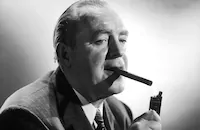
Pat O'brien

Carole Landis

Chester Morris
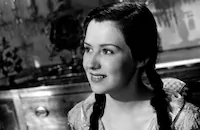
Ruth Warrick
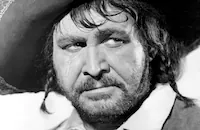
Barton Maclane

Tom Tully
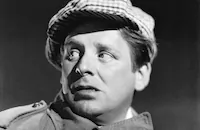
Wallace Ford

Howard Freeman
Erik Rolf
Matt Mchugh
Frank Sully
Frank Fenton
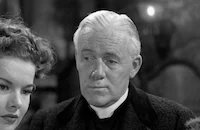
Charles D. Brown
Carol Nugent

Richard Lyon

George Mckay
Cyril Ring
Crew
David Allen
Rex Bailey
Lionel Banks
Ed Bernds
Roy Chanslor
Ray Cory
Edward Jewell
Viola Lawrence
Jean Louis
Jack Murphy
Aaron Nibley
Franz F. Planer
Robert Priestley
Phil L. Ryan
Paul Sawtell
M. W. Stoloff
Robert Wright

Film Details
Technical Specs

Award Nominations
Best Special Effects
Articles
Secret Command -
O'Brien turned to the short story "The Saboteurs," which brothers John and Ward Hawkins had published in the Saturday Evening Post. He then assigned scripting chores to Roy Chanslor, whose novels would inspire the films Johnny Guitar (1954) and Cat Ballou (1965). The two had worked together at Warner Bros., where O'Brien had starred in his script for The Final Edition (1932), then re-teamed at RKO for The Navy Comes Through (1942).
Chanslor's script casts O'Brien as Sam Gallagher, a reporter turned FBI agent who goes undercover to root out a Nazi sabotage ring at the shipyard where his estranged brother (Chester Morris) works. Although the enemy agents are the usual bloodthirsty lot, it's his brother who initially poses the greatest threat. First, he has a hard time believing O'Brien would want a job as a grunt at the shipyard, then he sees through the family with which the FBI has set up O'Brien. Complicating matters are the women in their lives, Carole Landis as a female agent who, with two war orphans, poses as O'Brien's happy little nuclear family and Ruth Warrick as an old flame of O'Brien's now involved with his brother.
For director, O'Brien turned to another man he'd worked with previously, A. Edward Sutherland. The British-born director had started as an actor and even served as one of the original Keystone Kops. Little wonder he was best known for his comedies, directing Laurel and Hardy in The Flying Deuces (1939), Mae West in Every Day's a Holiday (1937) and W.C. Fields in International House (1933), Mississippi (1935) and Poppy (1936). He also was adept at action and had worked with O'Brien and Chanslor on The Navy Comes Through.
Producing was a big step for O'Brien, who had never worked in that area before. Following seven years at Warner Bros., -- where his stage training made him a perfect match for the studio's fast-paced style, particularly in film's co-starring his good friend James Cagney -- O'Brien had struck out on his own after starring in Knute Rockne All American (1940). He continued playing leading roles, but at low-rent studios like RKO and Columbia. Producing could give him greater control over his career and a chance to share in the profits his name still generated.
For his first venture, he worked with a strong cast, including Morris, Landis, Warrick and veteran character actors like Wallace Ford, Barton MacLane and Tom Tully. To give the film an air of authenticity, they shot some background footage at the Calship Shipyards on Los Angeles' Terminal Island, which produced 467 ships for the Navy during World War II. All of that was appreciated by Variety, whose critic called it a "lusty melodrama of counter-espionage around a large shipyard, with expert blending of action and suspense with spontaneous good humor resulting in solid entertainment." Bosley Crowther of The New York Times was less enthusiastic, suggesting that "the performances are not shaded with nuances" and concluding that the whole thing "is as subtle as a right to the jaw."
This would prove the sole producing effort for O'Brien. His friend and co-producer, Ryan, would stay in that line long enough to create two other O'Brien vehicles, the crime drama Perilous Holiday (1946), which co-starred Warrick in another script by Chanslor, and the biographical crime drama Fighting Father Dunne (1948).
Director: A. Edward Sutherland
Producer: Pat O'Brien, Phil L. Ryan
Screenplay: Roy Chanslor
Based on the story "The Saboteurs" by John Hawkins and Ward Hawkins
Cinematography: Franz Planer
Score: Paul Sawtell
Cast: Pat O'Brien (Sam Gallagher), Carole Landis (Jill McGann), Chester Morris (Jeff Gallagher), Ruth Warrick (Lea Damaron), Barton MacLane (Red Kelly), Tom Tully (Brownie Brownell), Wallace Ford (Miller), Ray Teal (Shipyard Worker)
By Frank Miller

Secret Command -
Best Special/Visual Effects: Nominees & Winners Part 1 - Secret Command - Secret Command
A one-time foreign correspondent in the wartime employ of the FBI, Sam Gallagher (Pat O'Brien) is a Naval Intelligence agent who is sent to intercept a planned Nazi sabotage of an important American shipyard. His base of operations sets him up with an assumed name and a cover; that of a perfectly normal American Joe, married to "wife" Carole Landis, with two kids and a small house. When Gallagher's brother Jeff (Chester Morris) shows up, he becomes suspicious of Sam's situation, threatening to inadvertently blow his cover while, at the same time, Sam tries to uncover the Nazi saboteurs' location and plan of attack.
Under the working titles By Secret Command and Pilebuck, Secret Command is based on the short story "The Saboteurs" by John and Ward Hawkins. The film was the initial effort of Torneen Productions, Inc., a fledgling independent production company owned by Pat O'Brien and Phil Ryan. While the film earned Academy Award nominations for the special effects created by David Allen (photographic), Ray Cory (photographic), Robert Wright (photographic), Russell Malmgren (sound), and Harry Kusnick (sound), some critics were not enthusiastic about the film that the New York Times called "as subtle as a right to the jaw." But the industry trade paper Variety found much to admire in the Torneen production. The reviewer found favor with the lead and supporting actors, and with the "lusty" melodrama's "blending of action and suspense with spontaneous good humor resulting in solid entertainment."
Producer: Phil L. Ryan
Director: A. Edward Sutherland
Screenplay: Roy Chanslor, John Hawkins (story), Ward Hawkins (story)
Cinematography: Franz Planer
Film Editing: Viola Lawrence
Art Direction: Lionel Banks, Edward Jewell
Music: Paul Sawtell
Cast: Pat O'Brien (Sam Gallagher), Carole Landis (Jill McCann), Chester Morris (Jeff Gallagher), Ruth Warrick (Lea Damaron), Barton MacLane (Red Kelly), Tom Tully (Brownell).
BW-82m.
by Scott McGee
Best Special/Visual Effects: Nominees & Winners Part 1 - Secret Command - Secret Command
Ruth Warrick (1915-2005) - Ruth Warrick, (1915-2005)
She was born on June 29, 1915 in St. Joseph, Missouri. After attaining a degree in theatre from the University of Kansas City, she left for New York, where in 1938, she joined the Mercury Theater troupe, headed by a young artist on the rise by the name of Orson Welles. When Welles prepared to film Citizen Kane (1941) he took several players from his Mercury Theater (Joseph Cotten, Everett Sloan, Agnes Moorehead) and of course, Ruth Warrick. She made her film debut in Welles' cinematic epic as Emily Norton Kane. Indeed, to many film buffs, Warrick's icy charms are indispensable to the celebrated montage sequence opposite Welles at the breakfast table; particularly when he broaches the subject of her husband's infidelity:
Emily Kane: Charles, people will think...
Charles Kane: What I tell them to think!
Warrick received fine reviews for her performance, and she had good roles in her next two films The Corsican Brothers (1941), with Douglas Fairbanks Jr., and Journey Into Fear (1942), opposite Joseph Cotton. Sadly, Hollywood, not knowing what to do with a well-trained, mature actress like Warrick, began to cast her into routine, forgettable fare: Mr. Winkle Goes to War (1944), China Sky (1945), and Swell Guy (1946). Disney's Song of the South (1947), was a box-office hit, and was her best film in a while, but overall, the material she received over the next few years, simply wasn't worthy of her talents.
Things turned around for her in the mid-50s, when Warrick discovered the medium of television. She had regular roles on The Guiding Light (1953-54), As the World Turns (1956-60), Father of the Bride (1960-61), and was unforgettable as the sinister housekeeper, Hannah Cord, in Peyton Place (1965-67). Yet it was her 35-year run in the role of Phoebe Wallingford in All My Children (1970-2005), that Warrick achieved her greatest triumph. As the rich, intrusive matriarch of the fictitious, affluent town known as Pine Valley, Warrick found a role that could be at once gloriously hammy and quietly conniving - qualities that highlighted her renown versatility as an actress. To honor her contribution to television, Warrick received a lifetime achievement award from the Daytime Emmys last December. She is survived by three children, a grandson, and six great-grandchildren.
by Michael T. Toole
Ruth Warrick (1915-2005) - Ruth Warrick, (1915-2005)
Quotes
Trivia
Notes
The working titles of this film were By Secret Command and Pilebuck. The film opens with voice-over narration explaining that this is a "drama of the homefront about men and women building an American Victory fleet...built for America's own fighting forces to carry them into battle and bring them back, victorious." Although a Hollywood Reporter production chart places Robert Williams in the cast, his appearance in the released film has not been confirmed. Secret Command marked the initial effort of Terneen Productions, Inc., an independent production company owned by Pat O'Brien and Phil Ryan. According to a Hollywood Reporter news item, some scenes were shot at the Calship Shipyards in California. Carol Nugent made her screen debut in this picture. The film was nominated for an Academy Award for Best Special Effects.














